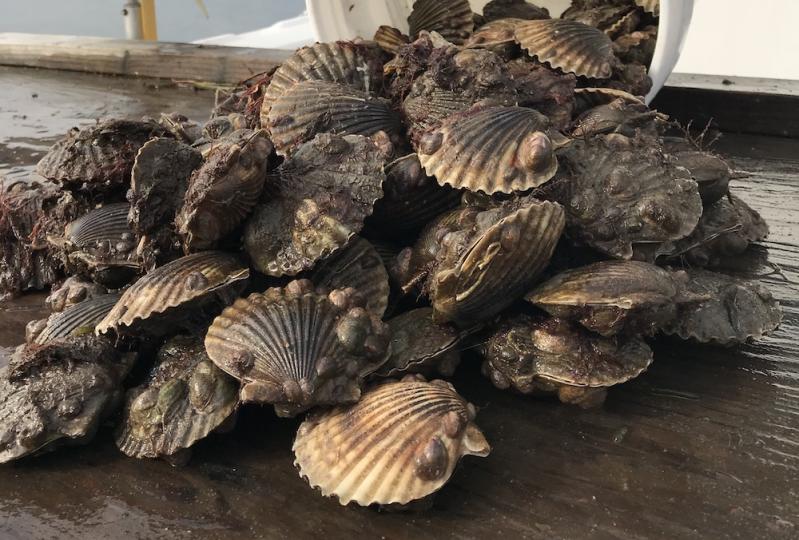The New York State Department of Environmental Conservation’s commissioner announced on Friday the detection of a coccidian parasite in a sample of bay scallops collected from the Peconic Bays, which is believed to have contributed to the massive die-off discovered in the fall of 2019.
The parasite, a single-cell member of the Apicomplexa phylum, is not harmful to humans and does not pose a public health threat but could significantly affect the bay scallop fishery, according to a statement from the D.E.C. The detection is the first of a coccidian parasite in bay scallops in New York waters that is associated with large-scale mortality.
Apicomplexan parasites of bivalve shellfish are typically acquired from the water column during water filtration, according to the D.E.C. The D.E.C. arranged for testing of 32 bay scallops collected from the Peconic Bays at the Marine Animal Disease Laboratory at Stony Brook University in November. The coccidian parasite had infected the kidney in both juvenile and adult bay scallops in all samples where kidney tissue was observed. Extensive damage of the renal tubules sufficient to cause mortality was observed in some of the infected samples.
“The discovery of a protozoan parasite in bay scallops from Peconic Bays represents a significant threat to this commercially important fishery,” Commissioner Basil Seggos said in a statement issued by the D.E.C. on Friday. “While the parasite is not a public health concern, D.E.C. is working with Stony Brook’s Marine Animal Disease Laboratory to investigate environmental factors that promote disease development of the parasite and monitor its geographical extent in bay scallops in Peconic Bays in order to protect and restore this ecologically and economically important resource.”
Prior to discovery of the parasite, the exact cause of the die-off of between 90 and 100 percent of bay scallops in the Peconic region last year remained unknown, but scientists had pointed to physiological stress during spawning which was exacerbated by high summer water temperatures and low dissolved oxygen. The detection of the coccidian parasite in bay scallops from the Peconic Bays is now considered a contributing cause of last year’s die-off, which did not impact juvenile scallops.
In a December 2019 symposium at the Stony Brook Southampton campus, a panel of scientists discussed the exceptionally warm water temperatures last summer, low dissolved oxygen, the physiological stress of spawning, and ocean acidification as stressors that, in combination, may have caused the die-off. The cownose ray, a species common to southern waters, was observed last year in local waters and was also cited as a potential contributor, but the evidence for that was weak, the scientists said.
The die-off prompted Gov. Andrew M. Cuomo to issue a letter to Commerce Secretary Wilbur Ross requesting a federal fishery disaster declaration. The D.E.C. is working with National Oceanic and Atmospheric Administration Fisheries to provide additional information to support the determination.
As part of the 2020 State of the State, the governor proposed the Restore Mother Nature initiative, which would double the state’s artificial reef program and other shellfish restoration initiatives.
This article was updated with the version that appeared in print on Feb. 6, 2020.

